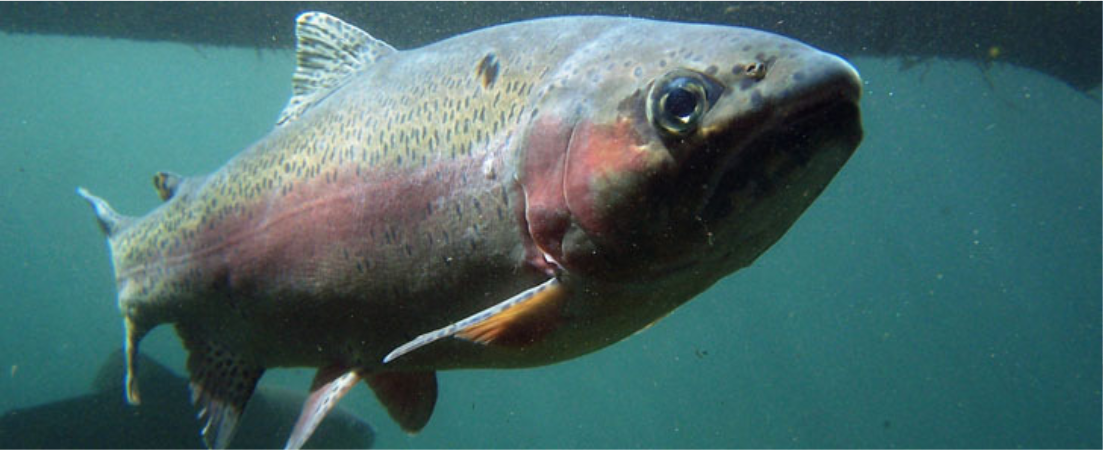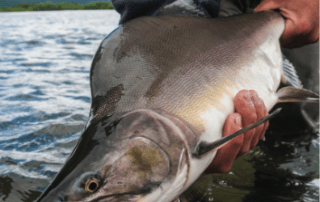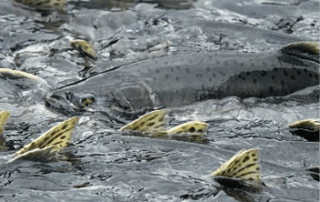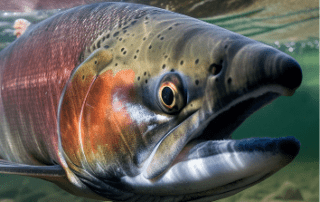Pink salmon, scientifically known as Oncorhynchus gorbuscha, is a pivotal species within the aquatic ecosystems of Alaska, holding both ecological and economic significance. Affectionately known as “humpback” or “humpy” salmon, these fish earn their monikers from the noticeable hump that develops on their backs during the spawning season. Indigenous to the North Pacific Ocean, their vast distribution spans from the Arctic Ocean to the Sacramento River in California. However, they are most prolific in Alaskan waters, contributing substantially to the state’s fisheries.The distinct life cycle of pink salmon adds to their intrigue, featuring odd and even-year populations with a two-year life span. Spawning occurs in freshwater rivers and streams from June to September, showcasing a fascinating spectacle as females create nests, or redds, in gravel substrates. Despite being the smallest among Pacific salmon species, adult pink salmon weigh between 3 and 5 pounds and measure 20 to 25 inches. They are crucial to commercial and sport fisheries. Alaska’s rivers and coastal areas witness a surge in pink salmon during their spawning season, emphasizing their vital role in sustaining the natural environment and the local economy.
Pink salmon are known for their distinct life cycle, which includes spawning in freshwater rivers and streams. These fish typically have a two-year life span, with odd and even-year populations. The odd-year fish spawn in odd-numbered years, and the even-year fish spawn in even-numbered years. Spawning usually occurs in the summer, from June to September, depending on the specific location. During this time, female pink salmon create nests, called redds, by using their tails to dig depressions in the gravel substrate. After depositing their eggs, the females cover them with gravel, and both male and female pink salmon die shortly after spawning. The eggs hatch in late winter or early spring, and the young salmon, known as fry, then go to the ocean to begin their marine phase.
In the realm of Pacific salmon, pink salmon stands out as the smallest in size, with adult individuals typically weighing between 3 and 5 pounds and measuring approximately 20 to 25 inches long. Despite their modest proportions, these salmon’s ecological and economic impact is substantial, as they constitute a vital resource for both commercial and sport fisheries. Nowhere is this significance more evident than in the waterways of Alaska, where pink salmon undergo a remarkable spawning spectacle. The rivers and coastal areas of Alaska experience a notable surge in pink salmon during their spawning season, attracting attention and admiration from both locals and visitors. Their adaptability is critical to their success, as pink salmon are found in various habitats, ranging from rivers and streams to expansive coastal waters. This adaptability has contributed to their status as one of the most widely distributed salmon species in the Pacific region. Whether navigating the pristine rivers of Alaska or thriving in the coastal waters of the Pacific Northwest, pink salmon play a crucial role in maintaining the rich biodiversity of these regions. Their resilience and ability to flourish in diverse environments underscore the enduring impact of this species on both the natural ecosystems and the human communities that rely on their presence.



